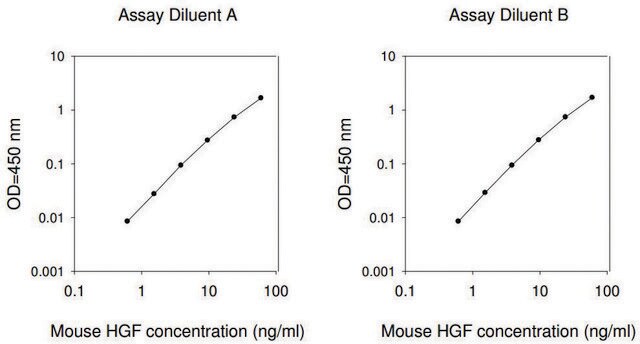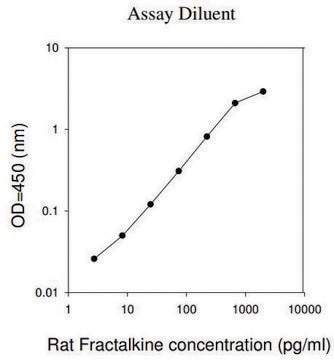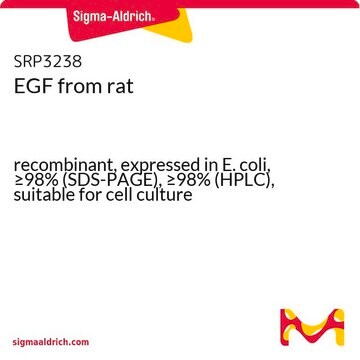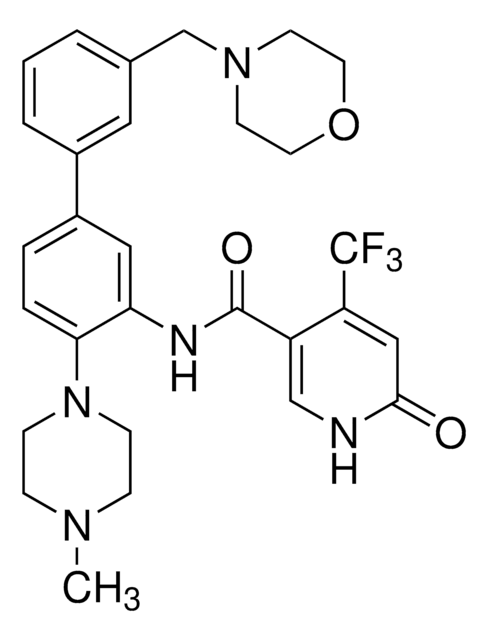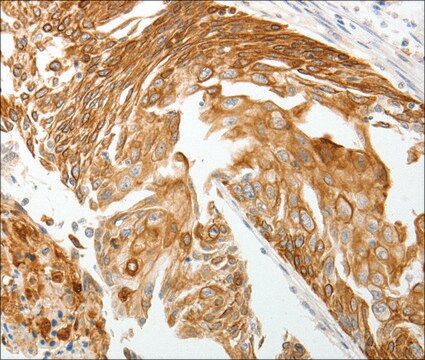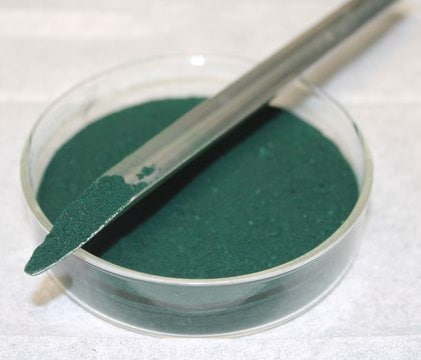RAB0215
Mouse HGF ELISA Kit
for cell and tissue lysates
Zaloguj sięWyświetlanie cen organizacyjnych i kontraktowych
About This Item
Kod UNSPSC:
41116158
NACRES:
NA.32
Polecane produkty
reaktywność gatunkowa
mouse
opakowanie
kit of 96 wells (12 strips x 8 wells)
metody
ELISA: suitable
capture ELISA: suitable
moc wejściowa
sample type cell lysate
sample type tissue lysate
assay range
inter-assay cv: <12%
intra-assay cv: <10%
sensitivity: 400 pg/mL
standard curve range: 0.614-60 ng/mL
metoda wykrywania
colorimetric
Warunki transportu
wet ice
temp. przechowywania
−20°C
informacje o genach
mouse ... Hgf(15234)
Powiązane kategorie
Opis ogólny
Zestaw Mouse HGF (Hepatocyte Growth Factor) ELISA (Enzyme-Linked Immunosorbent Assay) jest testem immunoenzymatycznym in vitro do ilościowego pomiaru lizatu komórek i tkanek mysiego HGF.
Immunogen
Rekombinowany mysi HGF
Zastosowanie
For research use only. Not for use in diagnostic procedures.
Please refer to the attached General ELISA KIT Procedure (sandwich, competitive & Indirect ELISA)
Please refer to the attached General ELISA KIT Procedure (sandwich, competitive & Indirect ELISA)
Inne uwagi
Dla tego produktu dostępny jest przykładowy certyfikat analizy.
Wpisz słowo sample w polu tekstowym przeznaczonym na numer partii.
Wpisz słowo sample w polu tekstowym przeznaczonym na numer partii.
Ta strona może zawierać tekst przetłumaczony maszynowo.
Elementy zestawu są też dostępne oddzielnie
Numer produktu
Opis
Karta charakterystyki
- RABDIL6ELISA 5X Sample Diluent Buffer (Item D2)Karta charakterystyki
- RABELADEELISA 5X Assay/Sample Diluent Buffer E (Item E2)Karta charakterystyki
- RABLYSIS12X Cell Lysis Buffer (Item J)Karta charakterystyki
- RABSTOP3ELISA Stop Solution (Item I)Karta charakterystyki
- RABTMB3ELISA Colorimetric TMB Reagent (HRP Substrate, Item H)Karta charakterystyki
- RABWASH420X Wash Buffer (Item B)Karta charakterystyki
Hasło ostrzegawcze
Warning
Zwroty wskazujące rodzaj zagrożenia
Zwroty wskazujące środki ostrożności
Klasyfikacja zagrożeń
Met. Corr. 1
Kod klasy składowania
8B - Non-combustible corrosive hazardous materials
Temperatura zapłonu (°F)
Not applicable
Temperatura zapłonu (°C)
Not applicable
Wybierz jedną z najnowszych wersji:
Masz już ten produkt?
Dokumenty związane z niedawno zakupionymi produktami zostały zamieszczone w Bibliotece dokumentów.
Qian Wen et al.
Journal of translational medicine, 12, 114-114 (2014-06-03)
Autologous transplantation of modified mesenchymal stem cells (MSCs) is a promising candidate for the treatment of the refractory clinical disease, avascular necrosis of the femoral head (ANFH). Our previous attempts by compounding MSCs with medical fibrin glue to treat ANFH
Mishaal B Patel et al.
Carcinogenesis, 35(8), 1891-1900 (2014-05-31)
Activated cancer-associated human pancreatic stellate cells (CAhPSCs, which produce the collagenous stroma of pancreatic cancer [PC]) are known to play a major role in PC progression. Apart from inducing cancer cell proliferation and migration, CAhPSCs have also been implicated in
Jesse Hudson et al.
Molecular and cellular biology, 34(19), 3689-3701 (2014-07-30)
Breast cancers are stratified into distinct subtypes, which influence therapeutic responsiveness and patient outcome. Patients with luminal breast cancers are often associated with a better prognosis relative to that with other subtypes. However, subsets of patients with luminal disease remain
Ji-Dong Chen et al.
Asian Pacific journal of cancer prevention : APJCP, 15(11), 4545-4548 (2014-06-28)
To investigate the changes of serum vascular endothelial growth factor (VEGF), soluble interleukin-2 receptor (SIL-2R) and hepatocyte growth factor (HGF) contents in patients with primary hepatocellular carcinoma (HCC) before and after percutaneous microwave coagulation therapy (PMCT) and determine their clinical
Elisa Tinazzi et al.
Immunology letters, 161(2), 236-240 (2014-01-23)
CD30 and CD30 ligand (CD30L) are members of TNF-receptor and TNF superfamilies respectively. CD30(+)T cells are increased in several diseases and interaction between CD30(+) and CD30L(+)T cells leads either to cell proliferation or apoptosis. In patients with rheumatoid arthritis (RA)
Nasz zespół naukowców ma doświadczenie we wszystkich obszarach badań, w tym w naukach przyrodniczych, materiałoznawstwie, syntezie chemicznej, chromatografii, analityce i wielu innych dziedzinach.
Skontaktuj się z zespołem ds. pomocy technicznej